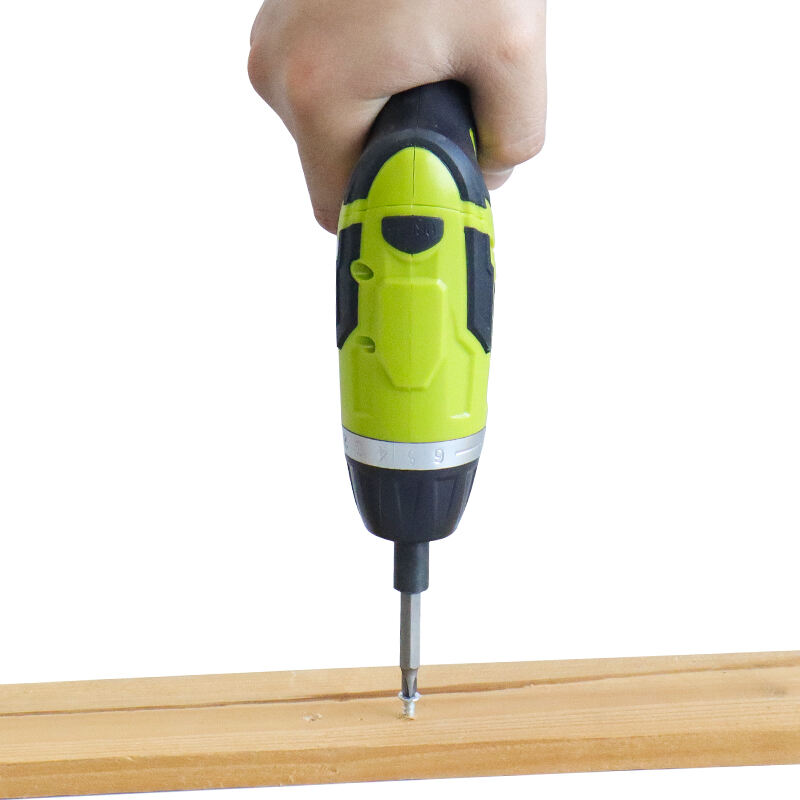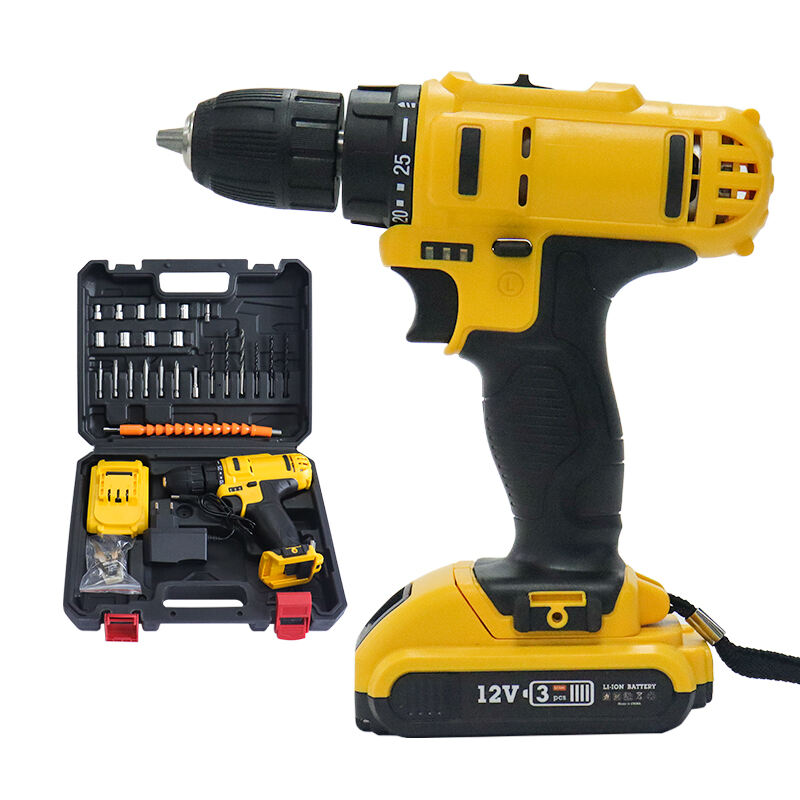Essential Guidelines for Safe and Effective Power Tool Usage
Using an electric drill might seem straightforward, but mastering this versatile power tool requires more than just pulling the trigger. Whether you're a DIY enthusiast or a professional contractor, understanding proper electric drill techniques can mean the difference between a successful project and costly mistakes. Let's explore the most common pitfalls and how to overcome them for better drilling results.
Fundamental Drilling Techniques
Proper Grip and Stance
Many users underestimate the importance of how they hold their electric drill. A proper grip involves placing your dominant hand on the handle with the trigger, while your other hand stabilizes the drill body. Your stance should be balanced, with feet shoulder-width apart, allowing you to apply steady pressure without losing control.
The electric drill should be held perpendicular to the work surface unless you're deliberately drilling at an angle. This ensures straight, clean holes and reduces the risk of bit breakage. Remember to keep your body aligned with the tool, avoiding awkward twisting motions that can lead to fatigue or injury.
Speed and Pressure Control
One of the most overlooked aspects of drilling is managing speed and pressure. Different materials require different approaches - metal needs slower speeds and steady pressure, while wood typically allows for faster drilling. Starting with too much speed can cause the electric drill bit to wander or create oversized holes.
Apply consistent pressure throughout the drilling process, but avoid forcing the tool. Let the electric drill do the work - excessive pressure can lead to overheating, damaged bits, or broken materials. Start slowly to create a pilot indent, then increase speed as needed while maintaining controlled pressure.
Material-Specific Considerations
Working with Different Surfaces
Each material presents unique challenges when using an electric drill. For wood, mark your drilling point and consider using a center punch or awl to create a starting divot. This prevents the bit from walking across the surface. When drilling into metal, always start with a smaller pilot hole and work up to larger sizes gradually.
For masonry work, ensure your electric drill has a hammer function and use appropriate masonry bits. Begin with light pressure until the bit catches, then increase pressure steadily. Working with tile or glass requires special bits and extremely controlled speed to prevent cracking.
Choosing the Right Bits
Using inappropriate bits is a common mistake that can damage both the material and your electric drill. Wood bits have sharp flutes for clean cutting, while metal bits are designed for heat resistance and durability. Masonry bits feature carbide tips for handling hard surfaces.
Always inspect bits before use, discarding any that show signs of wear or damage. A dull or damaged bit can cause your electric drill to work harder than necessary, potentially leading to motor strain or poor results. Invest in quality bits appropriate for your specific applications.

Maintenance and Safety Protocols
Regular Tool Maintenance
Proper maintenance extends the life of your electric drill and ensures optimal performance. Clean the tool after each use, removing dust and debris from vents and moving parts. Check the chuck regularly for tightness and smooth operation. For cordless models, maintain battery health by following manufacturer charging guidelines.
Lubricate moving parts as recommended by the manufacturer, and store your electric drill in a dry, protected environment. Keep bits organized and clean, preventing rust and ensuring they're ready for use when needed. Regular maintenance checks can identify potential issues before they become serious problems.
Essential Safety Measures
Safety should never be compromised when operating an electric drill. Always wear appropriate personal protective equipment, including safety glasses and hearing protection. Secure loose clothing and tie back long hair that could become entangled in the rotating parts.
Use clamps or a vise to secure your workpiece, never holding it with your free hand. Keep your workspace clean and well-lit, and always disconnect power before changing bits or performing maintenance. These simple precautions can prevent serious accidents and ensure successful project completion.
Advanced Drilling Applications
Precision Techniques
For projects requiring extreme accuracy, consider using drilling guides or templates. These aids help maintain perfect alignment and produce consistent results. When working on finished surfaces, use masking tape to prevent splintering and mark your drilling points clearly.
Understanding depth control is crucial for advanced applications. Many electric drill models feature depth stops or guides, but you can also create simple depth markers using tape or drill stops. This prevents overdrilling and ensures uniform depth across multiple holes.
Problem-Solving Strategies
When encountering difficulties, stop and assess the situation rather than forcing the tool. If your electric drill bit is smoking or creating burning odors, you're likely using too much speed or pressure. For deep holes, use a pecking motion to clear debris and prevent bit binding.
Consider pre-drilling pilot holes for large fasteners or when working near edges to prevent splitting. If your drill begins to bind, immediately release the trigger and carefully reverse the rotation to free the bit. These techniques help prevent damage and ensure professional results.
Frequently Asked Questions
How do I know when to replace my electric drill bits?
Replace drill bits when you notice signs of dulling, such as requiring more pressure to drill, producing rough holes, or showing visible wear on the cutting edges. Quality bits can be resharpened, but it's often more cost-effective to replace them, especially for casual users.
What's the best way to drill into ceramic tile?
Use a carbide-tipped drill bit specifically designed for tile, and apply water to keep the bit cool. Start slowly with light pressure, and don't use the hammer function on your electric drill. A piece of masking tape on the tile can help prevent the bit from wandering.
How can I prevent my electric drill battery from dying quickly?
To maximize battery life, store batteries at room temperature, avoid completely discharging them, and use the appropriate charger. Remove the battery when storing the drill for extended periods, and consider keeping a spare battery for longer projects.

